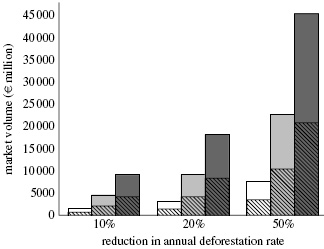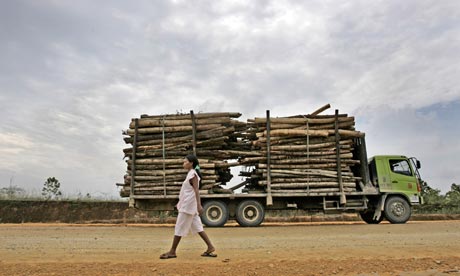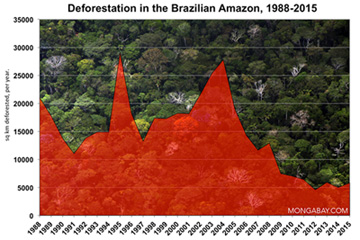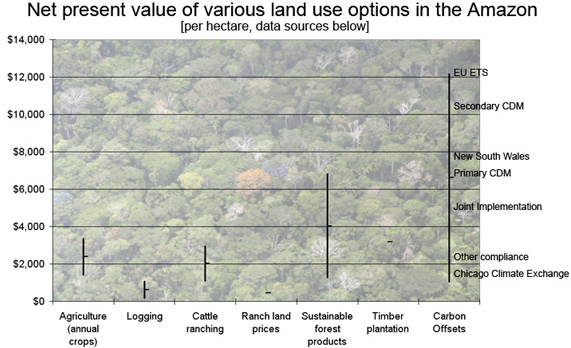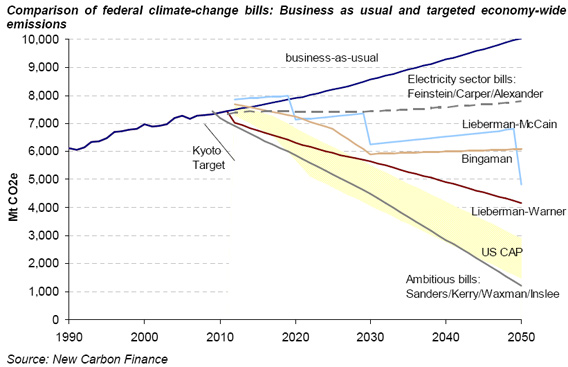Noam Chomsky interviewed by Michael Shank
Foreign Policy in Focus, January 30, 2008
Original URL
Michael Shank: In December 2007, seven South American countries officially launched the Bank of the South in response to growing opposition to the World Bank, the International Monetary Fund and other International Financial Institutions. How important is this shift and will it spur other responses in the developing world? Will it at some point completely undermine the reach of the World Bank and the IMF?
Noam Chomsky: I think it's very important, especially because, contrary to the impression often held here, the biggest country Brazil is supporting it. The U.S. propaganda, western propaganda, is trying to establish a divide between the good left and the bad left. The good left, like Lula in Brazil, are governments they would've overthrown by force 40 years ago. But now that's their hope, one of their saviors. But the divide is pretty artificial. Sure, they're different. Lula isn't Chavez. But they get along very well, they cooperate. And they are cooperating on the Bank of the South.
The Bank of the South could turn out to be a viable institution. There are plenty of problems in the region. But one of the striking things that's been happening in South America for quite a few years now is that they are beginning to overcome for the first time, since the Spanish invasion, the conflicts among the countries and the separation of the countries. It was a very disintegrated continent. If you look at transportation systems they don't have much to do with each other. They're mostly oriented toward the imperial power that was dominant. So you send out resources, you send out capital, the rich tiny elite have their chateaus on the Riviera, and that sort of thing. But they have not much to do with each other.
There was also a huge internal divide between a rich, mostly white, Europeanized elite and a massive population. For the first time, both of those kinds of disintegration, internal to the countries and among the countries, are being confronted at least. You can't say they're overcome but they're being confronted. The Bank of the South is one example.
Actually what's happening in Bolivia is a striking example. The mostly white, Europeanized elite, which is a minority, happens to be sitting on most of the hydrocarbon reserves. And for the first time Bolivia is becoming democratic. So it's therefore bitterly hated by the West, which despises democracy, because it's much too dangerous. But when the indigenous majority actually took political power for the first time, in a very democratic election of the kind we can't imagine here, the reaction in the West was quite hostile. I recall, for example, an article - I think it was the Financial Times - condemning Morales as moving towards dictatorship because he was calling for nationalization of oil. They omitted to mention, with the support of about 90% of the population. But that's tyranny. Tyranny means you don't do what the United States says. Just like moderation means that you're like Saudi Arabia and you do do what we say.
There are now moves toward autonomy in the elite-dominated sectors in Bolivia, maybe secession, which will probably be backed by the United States to try and undercut the development of a democratic system in which the majority, which happens to be indigenous, will play their proper role, namely, cultural rights, control over resources, political and economic policy, and so on. That's happening elsewhere but strikingly in Bolivia.
The Bank of the South is a step towards integration of the countries. Could it weaken the IFIs, yes it can, in fact they're being weakened already. The IMF has been mostly thrown out of South America. Argentina quite explicitly said, "Okay, we're ridding ourselves of the IMF." And for pretty good reasons. They had been the poster child of the IMF. They had followed its policies rigorously and it led to terrible economic collapse. They did pull out of the collapse, namely by flatly rejecting the advice of the IMF. And it succeeded. They were able to pay off their debts, restructure their debts and pay them off with the help of Venezuela which picked up a substantial part of the debt. Brazil in its own way paid off its debt and rid itself of the IMF. Bolivia is moving in the same direction.
The IMF is in trouble now because it is losing its reserves. It was functioning on debt collection and if countries either restructured their debt or refused to pay it, they're in trouble. Incidentally the countries could legitimately refuse to pay much of the debt, because, in my opinion at least, it was illegal in the first place. For example, if I lend you money, and I know you're a bad risk, so I get high interest payments, and then you tell me at one point, sorry I can't pay anymore, I can't call on my neighbors to force you to pay me. Or I can't call on your neighbors to pay it off. But that's the way the IMF works. You lend money to a dictatorship and an elite, the population has nothing to do with it, you get very high interest because it's obviously risky, they say they can't pay it off, you say okay your neighbors will pay for it. It's called structural adjustment. And my neighbors will pay me off. That's the IMF as a creditors' cartel. You get higher taxes from the north.
The World Bank is not the same institution, but there's the same kind of conflicts and confrontations going on. In Bolivia, one of the major background events that led to the uprising of the majority indigenous population to finally take political power was an effort by the World Bank to privatize water. Take an economics course, they'll tell you that you ought to pay the market price and so on. True value, yes, very nice, except that means poor people, which is most of the population, can't drink. Well that's called an externality; don't worry about things like that.
What the population did - and it was a big conflict, mostly in Cochabamba - peasants just forced the international water companies, Bechtel and others, just to pull out. It was supported by a solidarity movement here, it was quite interesting. But the World Bank had to pull out of that project and there are others like it. On the other hand, some of the things they do are constructive. It's not a totally destructive institution. But that's weakening too.
The same thing is happening in Asia. Take the Asian Development Bank. At the time of the Asian financial crisis, in 1997-98, Japan wanted to work through the Asian Development Bank to create a substantial reserve which would enable countries to survive the debt crisis instead of selling off their assets to the West. The United States just blocked it. But they can't do that anymore. The reserves in the Asian countries are just too high. In fact the United States survives on funding from Japan and China, which subsidizes the high consumption-high borrowing economy here. I don't think the United States at this point could tell the Asian Development Bank, "I'm sorry you can't do this." That's somewhat parallel to the Bank of the South. Similar things are now happening in the Middle East, with sovereign funds and so on.
Shank: With these institutions springing up in the developing world as alternatives to the IMF and the World Bank, what similar initiatives will emerge in the developing world regarding currencies?
Chomsky: It's already happening. Kuwait has already made a limited move toward a basket of currencies. The United Arab Emirates and Dubai are moving toward their own partial development funds. Saudi Arabia, that's the big important one, if they join in it'll become a major independent center of funding, lending, purchasing, and so on. It's already happening. Investment in the rich countries and to some extent in the region, particularly North Africa. Separate development funds. It's a limited move; they don't want to anger the United States.
Of course they rely on the United States in many ways, the elites. China, in particular, relies on the U.S. market. They don't want to undermine it. The same with Japan. So they're willing to buy treasury bonds instead of more profitable investments in order to sustain the U.S. economy, which is their market. But it's a very fragile situation. They very well may turn elsewhere and they're beginning to. I don't think anyone knows what would happen if the reserve-rich countries were to turn to profitable investment rather than supporting the U.S. high-consumption, high-debt economy.
Shank: The West resists countries nationalizing their oil supplies and their gas supplies but that trend continues regardless. Where is this headed? Do you see all oil- and-gas rich countries getting together and establishing an alternative market?
Chomsky: They tried with OPEC, which to some extent does it. But they have to face the fact that the West will not allow it to happen. If you go back to 1974, that was the first move toward oil independence by the oil-rich countries. Just read what American journalists and commentators were writing. They were saying they have no right to the oil. The more moderate writers were saying the oil should be internationalized for the benefit of the world. American agricultural wealth shouldn't be internationalized for the benefit of the world, but the oil of Saudi Arabia should be because they're not following what we tell them to do anymore.
The more extreme people, I guess it was Irving Kristol, said insignificant nations like insignificant people sometimes gain illusions about their own significance. So therefore the age of gunboat diplomacy is never over, we'll just take it from them by force. Robert Tucker, a serious international relations specialist who is considered pretty moderate, said it's just a scandal that we're letting them get away with running their own resources. Why are we sitting here, we've got the military force to take them. Go back to somebody like George Kennan, who's considered a great humanist. When he was in the planning sector, in the late 1940s and early 1950s, he said harsh measures may be necessary for "protection of our resources" -- which happen to be in some other country. That's just an accident of geography. They're our resources and we have to protect them by harsh measures, including police states and so on.
Take Bill Clinton. He had a doctrine too, every president has a doctrine. He was less brazen about it than Bush, didn't get criticized a lot, but his doctrine was more extreme than the Bush doctrine if taken literally. The official Clinton doctrine presented to Congress was that the United States has the unilateral right to use military force to protect markets and resources. The Bush doctrine said we've got to have a pretext, like we've got to claim they're a threat. Clinton doctrine didn't even go that far, we don't need any pretext. With markets and resources, we have a right to make sure that we control them, which is logical on the principle that we own the world anyway so of course we have that right.
You're going to have to look far in the political spectrum to find any deviation from this. So if the oil-rich countries were to try to really take independent control of the resources, there would be a very harsh reaction. The United States, by now, has a military system; more is spent on the military system than the rest of the world put together. There's a reason for that. That's not to defend the borders.
Shank: Do you think India will swing towards Russia and China as it positions itself in its allegiances or will it continue to cozy up with the U.S. post-nuclear agreement?
Chomsky: It's going in both directions. Part of the purpose of the nuclear agreement from the U.S. point of view was to try to encourage them to move into the U.S. orbit. But the Indians are playing a double game. They're improving relations with China too. Trade relations, other relations, joint investment are improving. They haven't been accepted as members but they're official observers in the Shanghai Cooperation Organization (SCO), which is mainly China-based but is a big developing organization that could be a counter to NATO. It includes the Central Asian states. It includes Russia with its huge resources, and China, a big growing economy. Observers include India, Pakistan and, crucially, Iran which is accepted as an observer and may join. But it excludes the United States.
The United States wanted to join as an observer. It was rejected. The SCO has officially declared that U.S. forces should leave the Middle East. And it's part of a move toward developing what's called an Asian Energy Security grid and other steps that will integrate that region and allow it to move toward independence from imperial control, Western control. South Korea has not yet joined but it might - another major industrial power. Japan is so far accepting its role as a U.S. client, but that's not graven in stone either.
So there are these centrifugal developments taking place all over the world.
Copyright © 2008, Institute for Policy Studies.
Read more...
Sphere: Related Content

